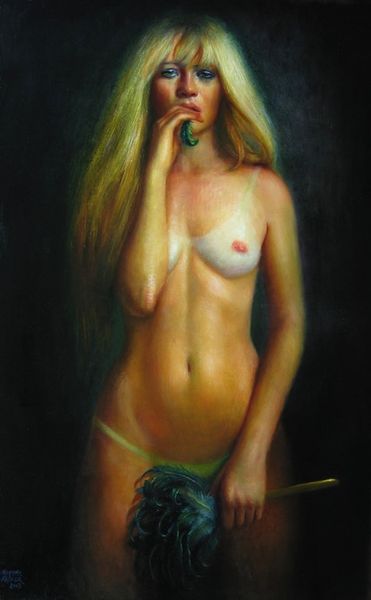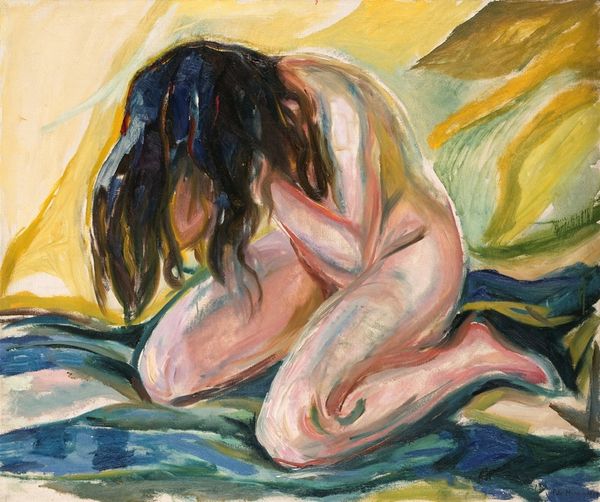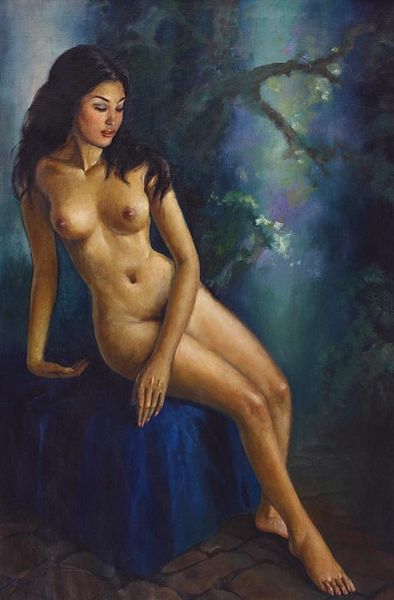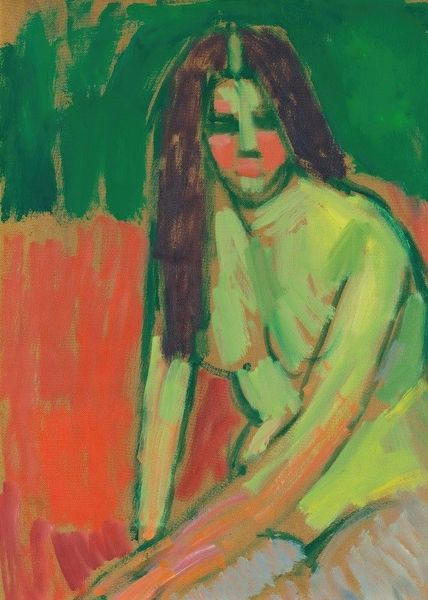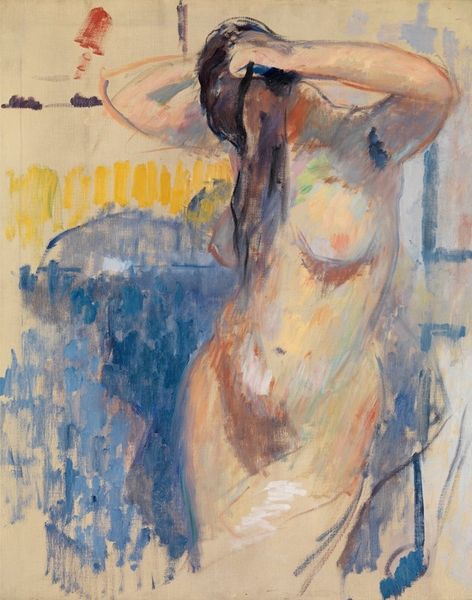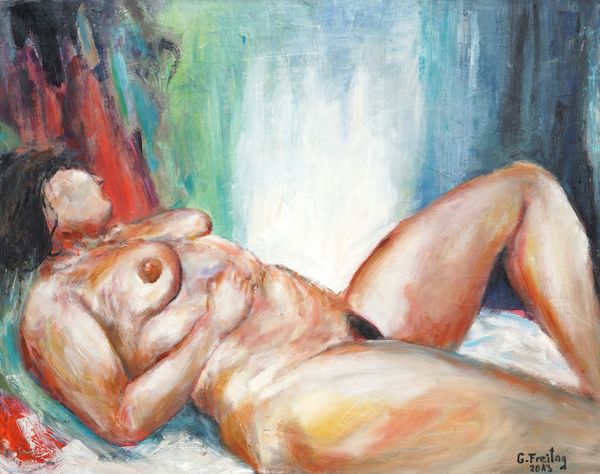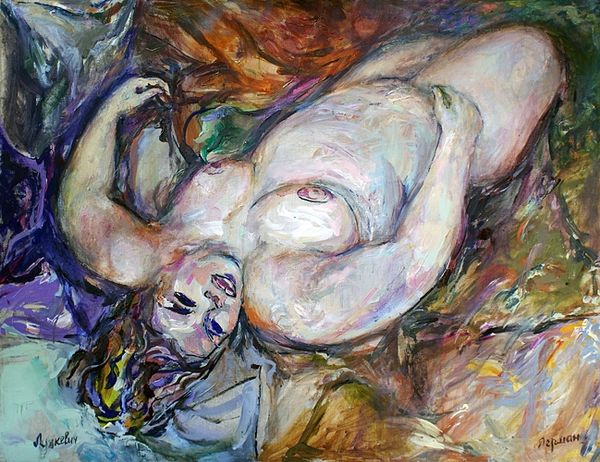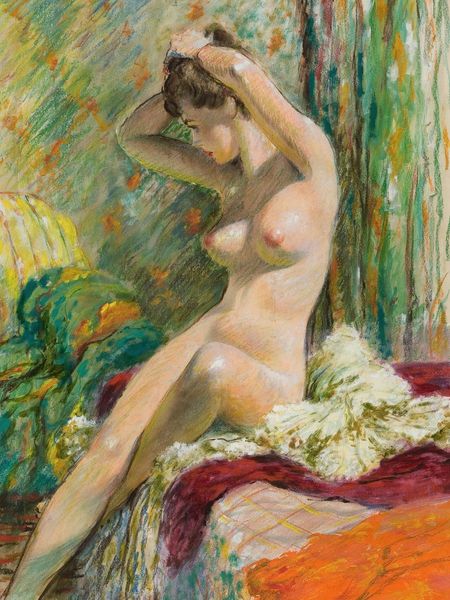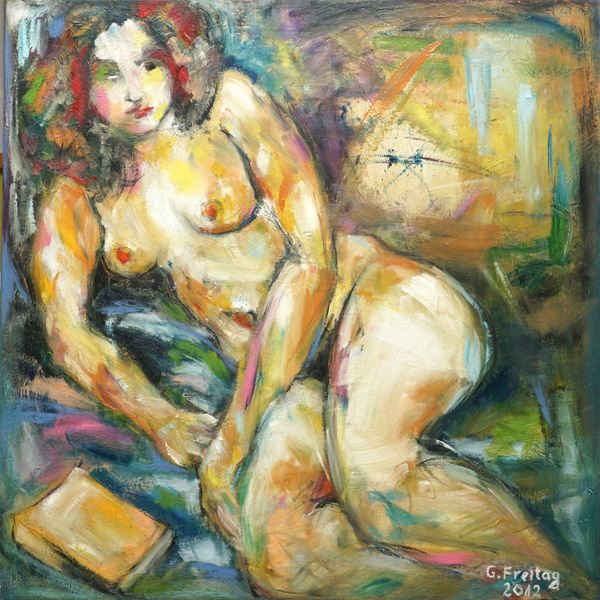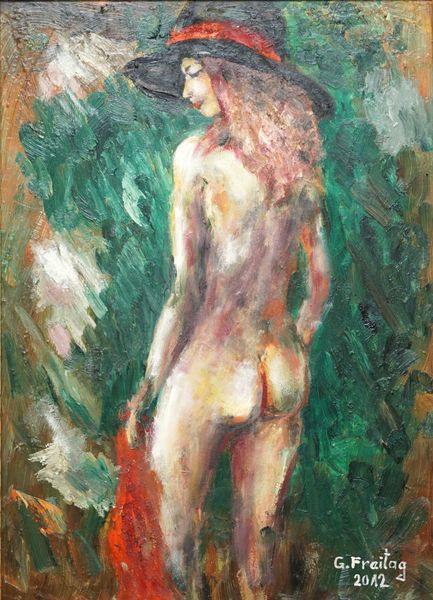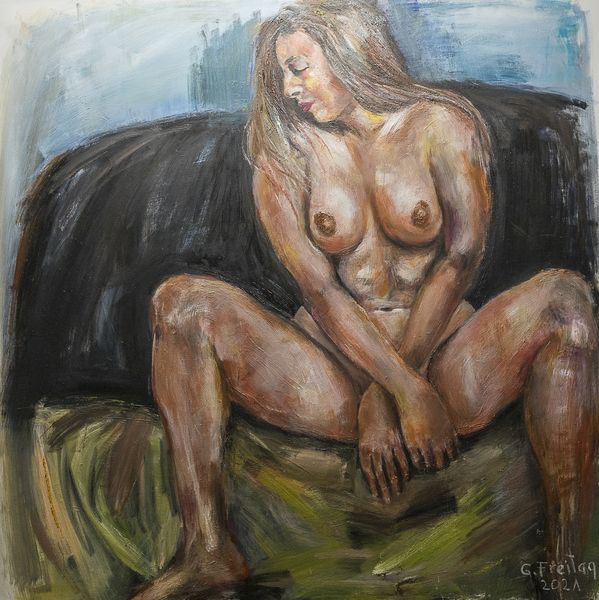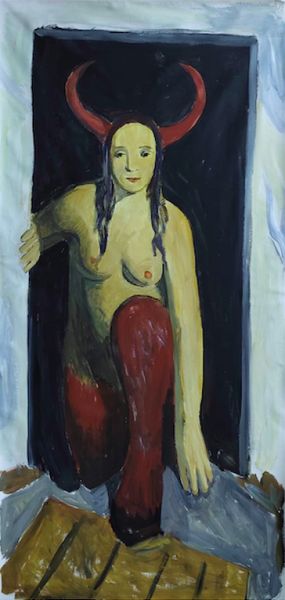
Copyright: Public Domain: Artvee
Editor: So this is Edvard Munch’s "Kneeling Nude," from around the 1910s, created with oil paint. The intense coloration gives it a striking impact, and I'm curious about its raw brushstrokes, particularly how they form this slightly unsettling image. What elements stand out to you, as you analyze the structure and composition? Curator: Primarily, I notice Munch's dynamic brushwork and unconventional color choices. Observe the chromatic intensity surrounding the figure and how these hues construct a non-naturalistic representation. Notice also how form seems to break from within, outward to the limits of representation, bordering on abstraction. Editor: Yes, that's interesting. It’s almost like he's more interested in the *idea* of a nude than accurately portraying one. Are the colors chosen arbitrarily, or are they deployed structurally? Curator: I would suggest they aren’t arbitrary. Note the relationship between the background ochre and greens versus the blues, creams, and pinks within the figure’s form. How does this arrangement articulate a distinction, creating pictorial depth? Consider, too, that Munch had earlier experimented with stark lines; here, color takes the place of line to divide figure from ground. Editor: It’s almost like a chromatic cage. I guess it forces us to focus on the feeling over realistic anatomy. Thank you; it's helped me understand his technique and intention much better! Curator: Precisely. Reflecting on Munch's work, consider how the aesthetic principles shape your interpretative experience and prompt further structural explorations of form, space, and hue.
Comments
No comments
Be the first to comment and join the conversation on the ultimate creative platform.
